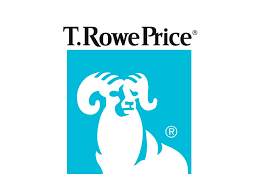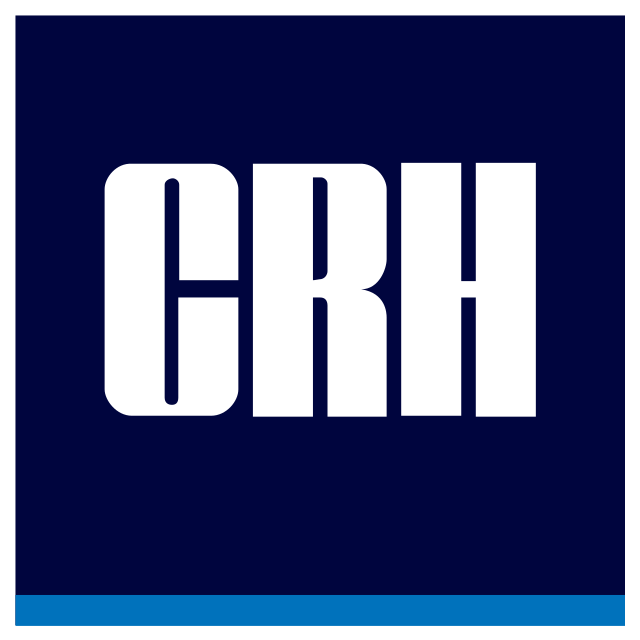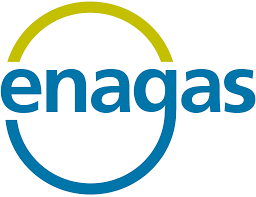Global Equities
Global High Conviction
Investor Updates
Below you will find this month’s commentary and portfolio update for the Global High Conviction unit class of the TAMIM Fund.

April 2024 | Investor Update
Dear Investor,
The TAMIM Global High Conviction unit class was down 3.32% for the month of April 2024, this was in comparison to the index return of -3.26%. The strategy has generated a return of 21.67% over the past 12 months.
“73.6% of all Statistics are made up” – anon
Equity markets had a tough start to April and then rebounded a little. Equity investors still seem keen to buy stories of improvement rather than valuations, (pace Tesla) supported by the feeling that the central banks have their back. This implies that central bankers don’t make mistakes. We all know however, they do, and thus at times such as now, when the macro data is unreliable and contradictory it’s worth analysing; and if possible immunising the portfolio against ‘outcome tails’.
“Data driven” is the “mot de jour” for central bankers but to be backward looking “data driven”, relying on the historical inflation and labour market statistics, is now, more than usual perhaps, too complacent and certainly error prone. (Remember the Fed’s dual mandate is essentially based on these two indicators.) It’s actually quite feasible that the data on labor and prices (and other economic measures) is incorrect and misleading all of us, including those central bankers upon whom we rely to ‘have our backs’. Therefore, invest with the knowledge that statistics and data are not perfect in normal times let alone the way we live now with continued extraordinary fiscal and monetary policies. Complacency in markets is very high (manifested in low levels of volatility and credit spreads) and the equity market very narrowly based. Even if the backwards looking data is accurate, the extraordinary fiscal and monetary policies of recent years are quite likely to be distorting the usual relationships for a few more years and thus producing the GIGO effect. Central bankers can and do make mistakes. Ask Arthur Burns.
Let’s cite a couple of problems with the data that seemingly justifies these ‘data driven’ platitudes.
- On inflation: the divergence between the PCE (provided by the BEA) and the CPI (provided by the BLS) in the USA has recently widened to its highest ever level. It’s not the gap between the two but the fact that the gap is changing makes this harder to interpret the level of price pressure in the economy.
- On employment: labor market statistics collected by the BLS and the ADP are also diverging and we are thus unsure about likely wage pressures, labor shortages, and the general health of company hiring intentions.
Given the divergence of these data sets, what reliance should we give them to set policy? Less than we currently trust. Diversify your portfolio and use a risk model to reduce the interest rate bets on a decline or a rise. Elsewhere the reaction to the Meta results, and their communication to the market, was interesting and reveals the schizophrenia prevailing? Meta, kind of, met market expectations and showed strong advertising growth. (It has long been a point we make that the likes of Meta are advertising platforms rather than true technology companies) Yet the shares fell heavily as the company guided toward much stronger capital investment to remain competitive in AI. This price reaction strikes us as strange in the extreme.
The ‘logic’ seems as follows:
- We the market love AI growth potential.
- META says we need to invest for AI leadership because investing is the way you get and retain a leadership position.
- Hang on we say, “we don’t love it THAT much that you have to spend any money”…
- and so we’ll smack the shares….
- because investing is somehow not a core activity for companies.
- Elsewhere we like the true technology companies, and we’ll mark those shares up, because of the increased spend on essential
equipment they make, even though they also invest heavily.
How much does the market really understand AI, and more importantly, other than private sector capital investment and R&D from where do investors think real growth is going to come? Without capital investment there will be little productivity improvement. So, we need MORE capital investment. It’s currently subdued relative to the past and subtly we think relative to what it needs to be given that newer technologies typically have faster rates of obsolescence; thus, requiring MORE capital investment. If you don’t think that makes sense, then have a look at the price of new and second hand EVs relative to where they were two-three years ago. New technology becomes obsolete more quickly and depreciation rates should be higher and so should investment. The market is yet to realise this regarding AI Without private sector capital investment, we run the risk that there will be less real growth and more inflationary pressures which may well cause a nasty period of STAGFLATION?
We switched Fujitsu to Inpex and Dai Nippon Printing in the global high conviction portfolio.
Central bankers are prone to make mistakes even when being ‘data driven’. They currently know not much more than you do about the state of employment and inflation, and to invest as though they won’t make a mistake with monetary policy because they’re being data driven is quite likely to cause you more problems than them. Ensure therefore your investments can withstand both too tight and too loose monetary policy settings. Goldilocks left the building a while ago. Stagflation is a risk.
We still suspect we are at a point of inflexion here where the market begins to favour a theme different from AI. Along with the Meta ‘problem’ the TSMC result comments point to a not untypical cyclical semi-conductor glut which will act as a dampener on the AI theme, at least for a while?
What we do favour currently are companies exposed to:
- Energy Infrastructure
- Defence Spending
- National Industrial Policy
- Financial exposure through asset management companies – if markets continue to run, so will their revenues; if markets fail to do so then continued M&A is likely and cost cutting to drive the bottom line will be easy through headcount reduction.
Sincerely yours,
Robert Swift and the TAMIM Team
Fund Performance
Portfolio Highlights

T Rowe Price Group (NASDAQ.TROW)
T Rowe Price is a global investment management firm. The business provides equities, fixed-income and multi-asset strategies to a client base primarily concentrated in North America. The majority of its strategies are deployed in retirement funds (the equivalent of superannuation in Australia) such as defined contribution plans. Similar to how you can choose what industry or retail fund to manage your super, North Americans choose a fund manager to invest their retirement savings. T Rowe takes a clip of the assets as a management fee each year, resulting in a highly profitable and cash generative business. Over the past three years, T Rowe has returned over US$6 billion to shareholders through dividends and share repurchases.
During the month the business announced first-quarter results. Assets under management increased to US$1.54 trillion with strong market gains offsetting client outflows. Encouragingly, management noted an uptick in mandate wins and fewer terminations. Earnings per share increased to US$2.49 for the quarter which implies the business trades on an earnings multiple of 11. Our preferred financial exposure is through asset managers as they provide both upside and downside protection: revenues will increase should markets continue to run; while if markets slide, cheap valuations and scope for cost-cutting should underpin earnings. In T Rowe’s case, the business has shown robust cost control by existing subscale strategies, such as its Australian equity fund.

CRH Plc (LON.CRH)
CRH is a global provider of building materials including cement, concrete and aggregates. Construction materials are a cyclical industry, subject to economic gyrations and high fixed cost bases. To earn an acceptable return on investment, suppliers need to be close to the customer, turn inventory often and maximize the use of equipment and throughputs. With over 3,100 sites in 29 countries, CRH is the largest materials company in North America and Europe, giving the company an unparalleled competitive advantage and a return on assets above 15%. Management has continued to entrench CRH’s leading market position through acquisitions, recently purchasing a US$2.1 billion asset portfolio in Texas. The business also acquired a 57% stake for US$1.4 billion in Australian domestic materials company Adbri. The founding Barro family will retain the remaining 43% shareholding.
In the years ahead CRH will be a tremendous beneficiary of nations improving infrastructure and reshoring critical supply chains. In North America alone, the Infrastructure Investment and Jobs Act, Inflation Reduction Act and CHIPS Act will together add US$2.2 trillion to new and existing projects. Management has guided for earnings per share of US$5.15 to US$5.45 in 2024 implying an earnings ratio of just 15. Given the growth prospects, valuation compared to peers and market position, we think this undervalues the opportunity for CRH.

Enagas SA (BME.ENG)
Enagas is a Spanish multinational energy company. The business owns and operates an extensive network of pipelines, terminals, storage and regasification facilities ensuring a reliable supply of gas to both Spain and more broadly Europe. Enagas also owns minority stakes in energy infrastructure located in the US, Peru, Mexico and Europe. Recent conflicts in Ukraine and the Middle East have reinforced the importance of energy security and the pitfalls of relying on other nations for baseload energy. Subsequently, 90 billion cubic meters (bcm) of natural gas contracts were signed worldwide in 2023, of which 20bcm were in the European Union. A further 60bcm of regasification (the process of turning LNG back to natural gas) projects are under construction in the region. During the month, Enagas announced its first-quarter results. Earnings increased 20% to €65.3 million and remain on track to reach the annual target of €260 to €270 million. Management also confirmed a €1 per share dividend for 2024, which would imply a dividend yield above 7%.
Looking forward, Enagas will play an integral role in helping Spain reach net zero. The government has announced an ambitious plan to replace fossil-fuel emissions with a national green hydrogen network that will be built and operated by Enagas. The investment in the new hydrogen grid, in addition to an undersea link connecting to France, is expected to cost €5.9 billion. The business is also working on building a regulatory framework for the green hydrogen sector that will regulate the rate of return Enagas is allowed to earn on the network. Recent reporting indicates the government will assume the risk of grid and Enagas will be offered a guaranteed income stream.
Fund Facts
Investment Parameters
| Management Style: | Active |
| Investments: | Global Equities |
| Investable universe: | MSCI World Net Total Return Index |
| Number of securities: | 80-110 |
| Single security limit: | +/- 5% relative to Investable Universe |
| Country/Sector limit: | +/- 10% relative to Investable Universe |
| Market capitalisation: | US$2+bn |
| Derivatives: | No |
| Leverage: | No |
| Portfolio turnover: | Typically < 25% p.a. |
| Cash level: | 0-100% (typically 0-10%) |
Fund Profile
| Investment Structure: | Unlisted Unit Trust available to wholesale or sophisticated investors |
| Minimum Investment: | $100,000 |
| Management Fee: | 1.00% p.a. |
| Admin & Expense Recovery: | Up to 0.35% |
| Performance Fee: | 20% of performance in excess of hurdle |
| Hurdle: | MSCI World Net Total Return Index |
| Fee Cap: | 2% of total FUM |
| Entry/Exit Fee: | Nil |
| Buy/Sell Spread: | +0.25% / -0.25% |
| Applications: | Monthly |
| Redemptions: | Monthly with 30 days notice |
| Investment Horizon: | 3-5+ years |
| Distributions: | Annual |

Invest via TAMIM Fund
Request additional details by using the form or if your ready to invest select the apply now button.
Invest via IMA
The TAMIM Global High Conviction strategy is available as an Individually Managed Account (IMA). Please see the Strategy Summary for terms or request Investment Documentation via form.
